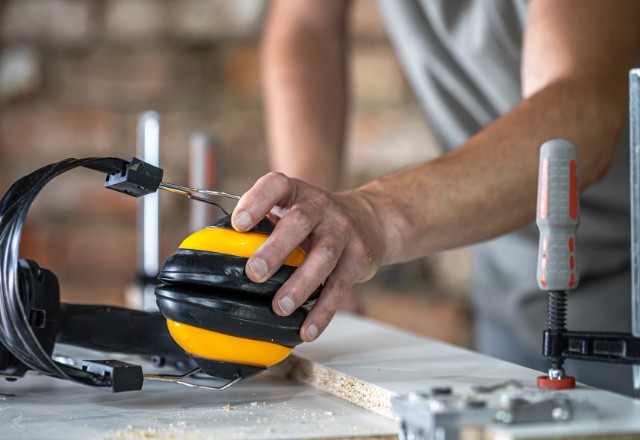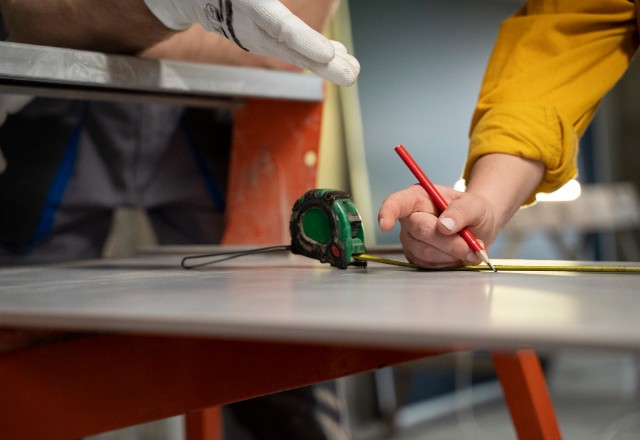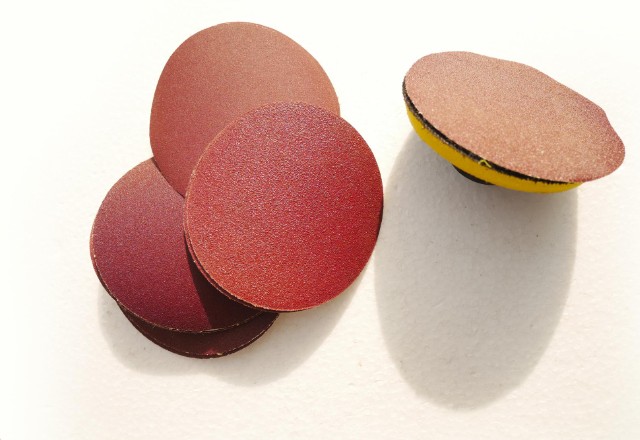Vinyl siding is a popular choice for homeowners due to its durability, low maintenance, and affordability. However, during the installation or repair process, cutting vinyl siding may be necessary to achieve a precise fit or create specific designs. Whether you are a homeowner looking to tackle a DIY project or a professional contractor seeking to enhance your cutting techniques, this article will offer valuable tips and techniques on the best ways to cut vinyl siding.
Disclaimer: The information provided in this article is intended for educational and informational purposes only. It should not be used as a substitute for professional advice and recommendations. For consultation regarding your specific situation, we recommend consulting with a professional roofing contractor such as Advance Roofing LLC, who has been providing quality roofing solutions to the Spokane, WA area for many years.
What You’ll Need
 When it comes to cutting vinyl siding, having the right tools and equipment is essential. To ensure a clean and precise cut, make sure you have the following items on hand:
When it comes to cutting vinyl siding, having the right tools and equipment is essential. To ensure a clean and precise cut, make sure you have the following items on hand:
- Safety goggles: Protect your eyes from any flying debris or shards while cutting vinyl siding.
- Tin snips: A pair of tin snips with sharp blades will allow you to cut through vinyl siding with ease. Look for snips specifically designed for cutting vinyl.
- Pencil: Use a pencil to mark the cutting line on the vinyl siding before making any cuts. This will help you achieve accurate and straight cuts.
- Straight edge: A straight edge, such as a ruler or level, is necessary to guide your cuts and ensure they are perfectly straight.
- Measuring tape: Measure the length of the vinyl siding panel that needs to be cut to ensure a precise fit.
By having these tools and equipment ready, you can confidently cut vinyl siding for your home improvement projects. Remember to always prioritize safety by wearing goggles and using tools properly.
Preparation
Preparation is key when it comes to cutting vinyl siding. Before starting the cutting process, it’s important to gather the necessary tools and take safety precautions.
Measuring & Marking the Siding Panel
 Before cutting vinyl siding, it is crucial to accurately measure and mark the siding panel to ensure clean and precise cuts. Here are the steps to follow:
Before cutting vinyl siding, it is crucial to accurately measure and mark the siding panel to ensure clean and precise cuts. Here are the steps to follow:
- Measure the length of the wall section: Use a tape measure to determine the length of the wall section that needs to be covered with vinyl siding.
- Subtract the necessary amount: Subtract the recommended amount from the length of the siding piece. This allows for the expansion and contraction of the vinyl siding due to temperature changes.
- Position the siding on a flat table or workbench: Place the vinyl panel on a flat surface such as a table or workbench. Make sure it hangs off the edge to provide ample space for cutting.
- Mark the cutting line: Use a straight edge or ruler to mark the cutting line along the edge of the vinyl siding panel. Make sure the line is straight and extends across the entire width of the panel.
Remember, working on a flat surface is crucial to prevent shifting during the cutting process, which can lead to uneven cuts. Taking accurate measurements and marking the panel appropriately will ensure the vinyl siding fits perfectly for a professional and aesthetically pleasing finish.
Adjusting the Power Tool or Preparing a Manual Tool
When cutting vinyl siding, it is important to properly adjust power tools or prepare manual tools to achieve clean and precise cuts.
For power tools such as circular saws or angle grinders, adjustments are key. When using a circular saw, it is recommended to switch to a tooth plywood blade specifically designed for cutting vinyl siding. Also, adjust the depth of the blade to slightly more than the thickness of the siding panel. This will prevent any frayed edges or rough cuts. When using an angle grinder, a fine-tooth plywood or abrasive blade can be used. Make sure to wear proper protective gear such as goggles and gloves when operating the power tool.
When it comes to manual tools like utility knives or tin snips, preparations are essential. To achieve a straight cut with a utility knife, first, use a sharp blade and a straight edge or ruler to guide the cut. Apply medium pressure on the vinyl planks while cutting to avoid any frayed edges. Tin snips can also be used for cutting vinyl siding. Make sure to use a pair of tin snips with sharp blades and a straight cutting edge. Apply even pressure to create a clean and precise cut.
Choosing the Right Blade for Cutting Vinyl Siding
 When it comes to cutting vinyl siding, choosing the right blade is crucial for achieving clean and precise cuts. There are different types of blades available, each designed for specific purposes.
When it comes to cutting vinyl siding, choosing the right blade is crucial for achieving clean and precise cuts. There are different types of blades available, each designed for specific purposes.
- For thinner vinyl siding panels, a fine-point blade is recommended. This type of blade has a narrower tip, allowing for more delicate cuts without the risk of damaging the siding. Fine-point blades are ideal for creating straight cuts or intricate shapes.
- On the other hand, for thicker vinyl panels, a deep-point blade is the better choice. This blade has a wider and stronger tip, enabling it to cut through thicker materials with ease. Deep-point blades are perfect for making clean cuts on heavy-duty vinyl siding.
In addition to using blades specifically designed for vinyl siding, a miter saw can be a useful tool, especially for longer and angled cuts. When using a miter saw, make sure to turn the blade around so that it rotates in the opposite direction. This will result in a smoother cut and minimize any frayed edges or rough cuts.
Putting on Protective Gear
 When cutting vinyl siding, it is crucial to prioritize safety by wearing the appropriate protective gear. This will help prevent any potential injuries and ensure a safe cutting process.
When cutting vinyl siding, it is crucial to prioritize safety by wearing the appropriate protective gear. This will help prevent any potential injuries and ensure a safe cutting process.
- The first and most essential piece of protective gear is safety goggles or glasses. These protect your eyes from any debris or particles that may fly off while cutting. It is important to choose goggles that have high impact resistance to offer maximum protection.
- Hearing protection is also necessary as cutting vinyl siding can produce loud noise levels. Wearing earplugs or earmuffs will help safeguard your hearing from any potential damage.
- A mask or respirator is recommended to shield your respiratory system. This will protect you from inhaling any dust or fine particles released during the cutting process, promoting better air quality and reducing the risk of respiratory issues.
- Utility gloves are essential for hand protection. They provide a barrier between your hands and any sharp edges or materials, preventing cuts or scrapes. Make sure to choose gloves that are durable and provide a good grip.
- Sturdy shoes or boots are crucial to protect your feet from potential hazards on the job site. They should have steel or composite toe caps to guard against heavy objects falling and crushing your feet.
- Lastly, wearing high-coverage clothing is important to protect your skin from any accidental cuts or scrapes. Long sleeves and pants made from durable materials will offer an added layer of protection.
Remember, putting on the necessary protective gear before cutting vinyl planks is essential for your safety. Always prioritize personal protection to ensure a smooth and injury-free cutting process.
Cutting with a Power Tool
Cutting siding with a power tool can be a quicker and more efficient method compared to using manual tools like utility knives or tin snips. Power tools such as circular saws or reciprocating saws with dedicated vinyl siding blades are designed to make clean and precise cuts on vinyl siding. These tools are especially beneficial for complex cuts, cuts for vinyl siding spaces, or the replacement of large sections of siding.
Setting Up the Power Tool for Cutting Vinyl Siding
When it comes to cutting vinyl siding, using a power tool such as a miter saw or circular saw can make the task easier and more efficient. Before diving into the cutting process, it is important to properly set up the power tool for the job.
- First, ensure that you have all the necessary tools and equipment ready. This includes a miter saw or circular saw, safety goggles, a carpenter’s square, measuring tape, a straightedge, a pencil, and of course, the vinyl siding that you will be cutting.
- Next, securely set up the power tool on a flat table or workbench. Make sure it is stable and that all safety precautions have been taken.
- Now, it’s time to prepare the saw blade. For a smoother cut, turn the blade around on the power tool. This will help prevent frayed edges and rough cuts.
- Once everything is set up, you can begin the cutting process. Take measurements of the siding using a measuring tape and mark the cutting line with a pencil and the assistance of a straightedge or carpenter’s square to ensure accuracy.
Remember to wear your safety goggles to protect your eyes from any debris or flying particles.
Making Straight Cuts with an Angle Grinder or Circular Saw
When it comes to making straight cuts on vinyl siding, an angle grinder or circular saw can be incredibly useful tools. Here’s how to do it:
- First, ensure you have the necessary safety gear, including safety goggles and gloves, to protect yourself during the cutting process.
- Choose an appropriate blade for cutting vinyl siding. Look for a dedicated vinyl siding blade with fine teeth to ensure clean and precise cuts. Set up the blade on the angle grinder or circular saw according to the manufacturer’s instructions.
- Before starting the cutting process, make sure the power tool is securely set up on a flat and stable surface. Double-check that all safety precautions are taken.
- Measure and mark the cutting line on the siding plank using a measuring tape and pencil. For straight cuts, utilize a straightedge or carpenter’s square for accurate markings.
- When ready, turn on the angle grinder or circular saw and carefully guide the blade along the cutting line. Apply medium pressure to maintain control and make a smooth cut.
Remember to always follow manufacturer guidelines and prioritize safety while using power tools. Alternative tools that can be used for cutting vinyl siding include utility knives, tin snips, or siding shears. These options may be suitable for simpler cuts or situations where power tools are not available.
Finishing Touches on Rough Edges with Sandpaper or a File

After cutting vinyl siding, you may notice rough edges or frayed sections that need to be smoothed out for a clean finish. Luckily, this can be easily done using sandpaper or a file.
- To start, gently sand the rough edges of the vinyl siding with a fine-grit sandpaper. Use a back-and-forth motion with light pressure to remove any frayed or jagged sections. Be careful not to sand too aggressively, as this can damage the siding.
- Alternatively, you can use a file to smooth out the rough edges. Hold the file at a slight angle and gently glide it along the edges of the vinyl siding. This will help to remove any sharp or uneven sections, resulting in a neater appearance.
Remember to always work in a well-ventilated area and wear safety goggles and gloves to protect yourself during the sanding or filing process.
Alternatives to Angle Grinders and Circular Saws
When it comes to cutting vinyl siding, you don’t necessarily need to rely on power tools like angle grinders or circular saws. There are several manual tools and methods that can be just as effective.
- One of the most commonly used manual tools for cutting vinyl siding is a utility knife. A sharp utility knife with a straight edge can make clean and precise cuts on vinyl panels. Simply score the siding panel using a straight edge as a guide, and then apply medium pressure to snap it along the scored line. This method is ideal for straight cuts and does not require any specialized equipment.
- Another manual tool option is using tin snips. Tin snips are designed to cut through various materials, including vinyl siding. They are particularly useful for making complex cuts, such as cuts for siding spaces or intricate designs. To use tin snips, position the jaws of the snips on the section you want to cut and apply steady pressure to make the cut.
Both the utility knife and tin snips offer the advantage of being portable and easy to use. They also do not create excessive dust or noise like power tools. However, it is important to note that these manual tools may not be suitable for certain situations or projects. In such cases, it is recommended to consult a professional contractor or a qualified siding company for advice and assistance.
Cutting Manually Using a Utility Knife
 When it comes to cutting vinyl planks, using a utility knife is an effective and efficient method. Here’s how to cut siding planks with a utility knife:
When it comes to cutting vinyl planks, using a utility knife is an effective and efficient method. Here’s how to cut siding planks with a utility knife:
1. Start by placing the strip of siding face-up on a sturdy work table. Ensure that you have a clean and flat surface to work on.
2. Position a straightedge along the siding where you want to make the cut. This helps you create a precise and straight line for cutting.
3. Take the sharp utility knife and score along the line that you marked with the straightedge. Apply medium pressure as you cut, ensuring that you have a clean and deep score without damaging the adjacent siding.
4. Once you have scored the siding, gently bend the strip along the scored line. With the right application of pressure, the siding should snap cleanly and neatly.
Remember to always exercise caution, wear protective gear, and work on a flat and stable surface for the best results.
Conclusion
Cutting vinyl siding can seem like a daunting task, but with the right tools and techniques, it doesn’t have to be. Angle grinders or circular saws are great for making precise cuts in thick material such as vinyl siding. However, manual tools such as utility knives and tin snips can also be effective for cutting vinyl siding. Remember to always keep safety in mind and consult a professional if you are unsure about the best way to cut vinyl siding.



 509-201-4190
509-201-4190
